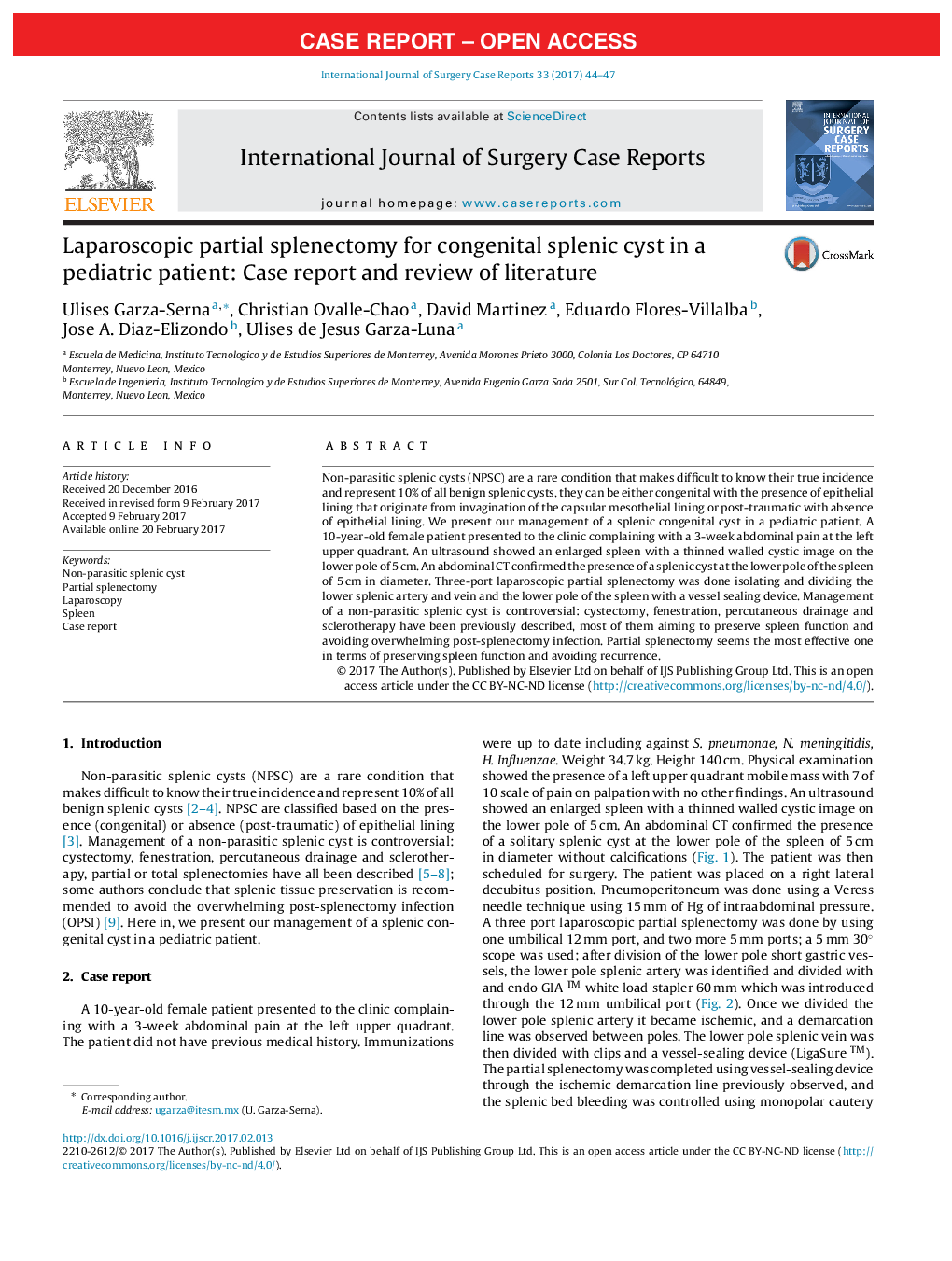| Article ID | Journal | Published Year | Pages | File Type |
|---|---|---|---|---|
| 5732862 | International Journal of Surgery Case Reports | 2017 | 4 Pages |
â¢We present a rare case of a congenital splenic cyst that corresponds to less than 10% of non-parasitic splenic cyst.â¢We describe our laparoscopic approach management of a partial splenectomyâ¢We review the literature on the different treatment options for NPSC based on recurrence and success rates.
Non-parasitic splenic cysts (NPSC) are a rare condition that makes difficult to know their true incidence and represent 10% of all benign splenic cysts, they can be either congenital with the presence of epithelial lining that originate from invagination of the capsular mesothelial lining or post-traumatic with absence of epithelial lining. We present our management of a splenic congenital cyst in a pediatric patient. A 10-year-old female patient presented to the clinic complaining with a 3-week abdominal pain at the left upper quadrant. An ultrasound showed an enlarged spleen with a thinned walled cystic image on the lower pole of 5Â cm. An abdominal CT confirmed the presence of a splenic cyst at the lower pole of the spleen of 5Â cm in diameter. Three-port laparoscopic partial splenectomy was done isolating and dividing the lower splenic artery and vein and the lower pole of the spleen with a vessel sealing device. Management of a non-parasitic splenic cyst is controversial: cystectomy, fenestration, percutaneous drainage and sclerotherapy have been previously described, most of them aiming to preserve spleen function and avoiding overwhelming post-splenectomy infection. Partial splenectomy seems the most effective one in terms of preserving spleen function and avoiding recurrence.
